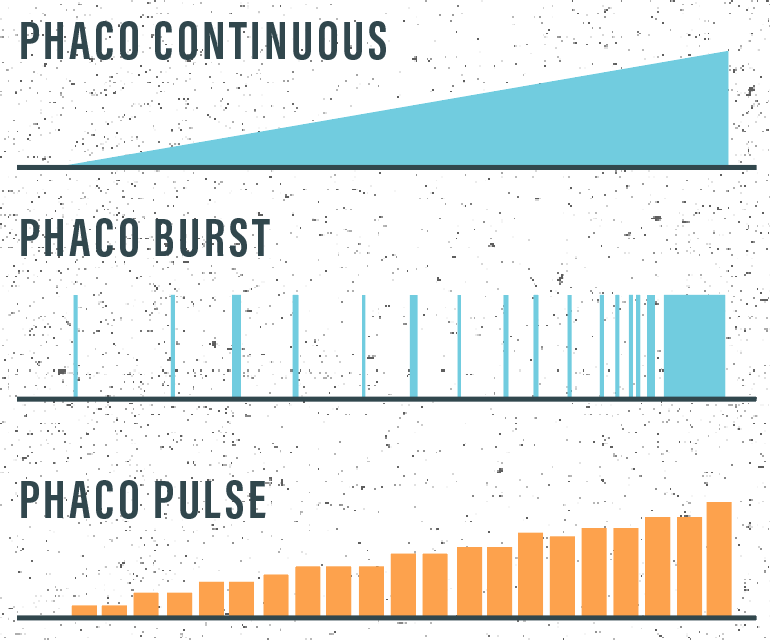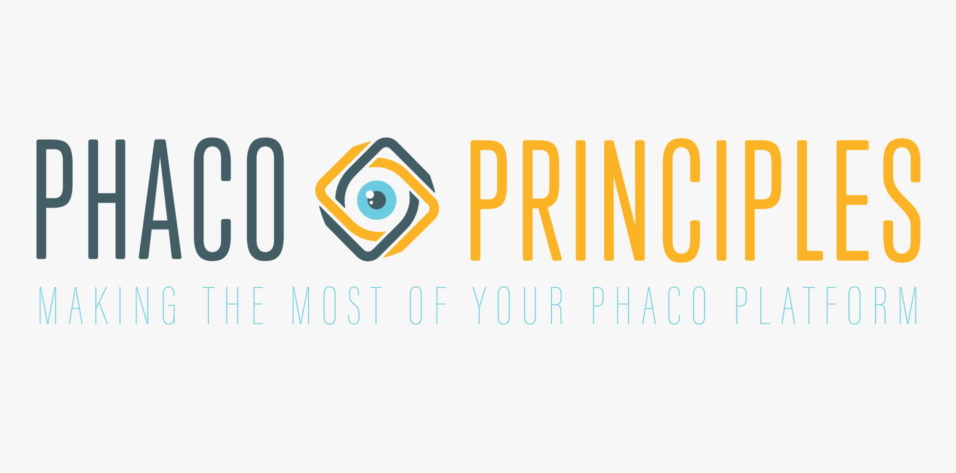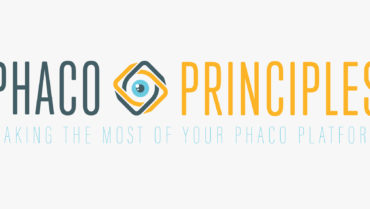Supported By

Phaco parameters are one of the most difficult (and important!) aspects of cataract surgery to understand for the beginning cataract surgeon. An understanding of phaco parameters is essential to emulsify and aspirate cataracts in the most energy-efficient, time-efficient, and safest manner. Each case is unique, and balancing phaco time and energy, along with fluid use and surgical technique, affects the corneal endothelium (edema), risk of wound burn, immediate visual outcome, and overall success.
BASICS OF PHACO POWER MODES

Continuous. Pressing down in foot position 3 results in a linear ramp-up in phaco power. There is no interruption in the delivery of phaco power in this mode. Think of this like an accelerator on your car: The more you press, the more phaco power you will command.
Overall, noncontinuous phacoemulsification is considered superior to continuous phacoemulsification. Remember that phaco energy will repel the nucleus fragment (chatter); having a disruption in phaco power allows a moment to regrasp the nuclear fragment with aspiration. Further, noncontinuous delivery allows for decreased total phaco energy. Burst and pulse modes are two basic forms of noncontinuous phacoemulsification.
Burst. Burst mode delivers a fixed amount of power with a varying interval of phaco-off time between bursts; as you depress the food pedal in position 3, bursts of power are delivered at decreasing time intervals, until continuous delivery is reached when the pedal is floored. A decreasing time interval between bursts increases the overall power delivery and helps clear the tip and “eat” the nuclear fragment. At lower intervals of burst, there is less repulsion at the tip, which can help you bury your phaco tip into the nucleus in preparation to chop.
Pulse. In pulse mode, the interval of phaco-on time and the interval of phaco-off time are fixed. Depressing the foot pedal results in increasing power of each phaco-on interval. What happens when you increase the number of pulses per second in pulsed intervals? The extremely short interval between pulses results in an overall effect similar to continuous phaco but with much less energy (for example, if your duty cycle is 50%, this would mean half as much energy in the same amount of time). This mode is also known as hyperpulse and is ideal for grooving. Hyperpulse modes can achieve pulse rates of up to 120 pulses per second!
In addition to tweaking modes of power delivery, the directional movement of the phaco tip influences the efficiency of phacoemulsification. Traditionally, a straight back-and-forth (longitudinal) movement of the tip was used to hammer into the nucleus. Although effective, you can imagine that this would result in retropulsion of the nuclear fragment, like bounceback after hammering a nail. Some newer technologies now utilize torsional and elliptical movements of the phaco tip instead, where twisting motions of the phaco tip reduces retropulsion of the nuclear fragment and improves efficiency in eating the nuclear fragment.
SURGEON TECHNIQUES
Divide and conquer. With this technique, a deep groove is created within the nucleus first on the sculpt setting. On the sculpt setting, high ultrasound energy, low aspiration, and low vacuum settings allow the phaco tip to carve a deep groove into the nucleus with low risk of aspirating unwanted material (capsule/iris). The quadrant setting uses high aspiration and vacuum levels and low ultrasound energy to then allow you to remove each quadrant of the nucleus. Keep in mind the high aspiration levels on this setting; to avoid aspirating and breaking the capsule, be sure to proceed with phaco (foot pedal position 3) only when the piece has been moved to the center of the eye.
Horizontal chop. Using high vacuum, the phaco tip is buried into the center of the nucleus. A second instrument then engages the far periphery on the nucleus and is deftly drawn toward the phaco tip, mechanically breaking the nucleus. The role of phacoemulsification in this technique is to impale the nucleus with the phaco tip—burst mode is ideal for this. This technique is both time- and energy-efficient, eliminating the phaco energy used to create a groove in divide and conquer.
Keep in mind that your actual vacuum and aspiration settings will depend on various factors, including:
- Make and model of your phaco machine;
- Compliance of your tubing;
- Size of your incision;
- Size of your phaco needle; and
- Size of your phaco needle sleeve.
A FEW PEARLS
- Match the size of your incision to the phaco needle sleeve and phaco tip. Ensuring a tight fit will minimize outflow through your incision and maintain a balance of your fluidics.
- Unexpected chamber shallowing, poor followability of lens fragments, and unexpected high vacuum are all warning signs of fluidic mismatch that may lead to wound burn or signal a posterior capsular tear.
- When starting out, approach lens removal with the mindset of “phaco-assisted aspiration”—grab your fragments in foot position 2 and lightly toggle between foot position 2 and 3 to use a little phaco energy to emulsify the fragment at your tip. This will help you to avoid using excessive phaco energy when starting out.
Good luck to you all!




